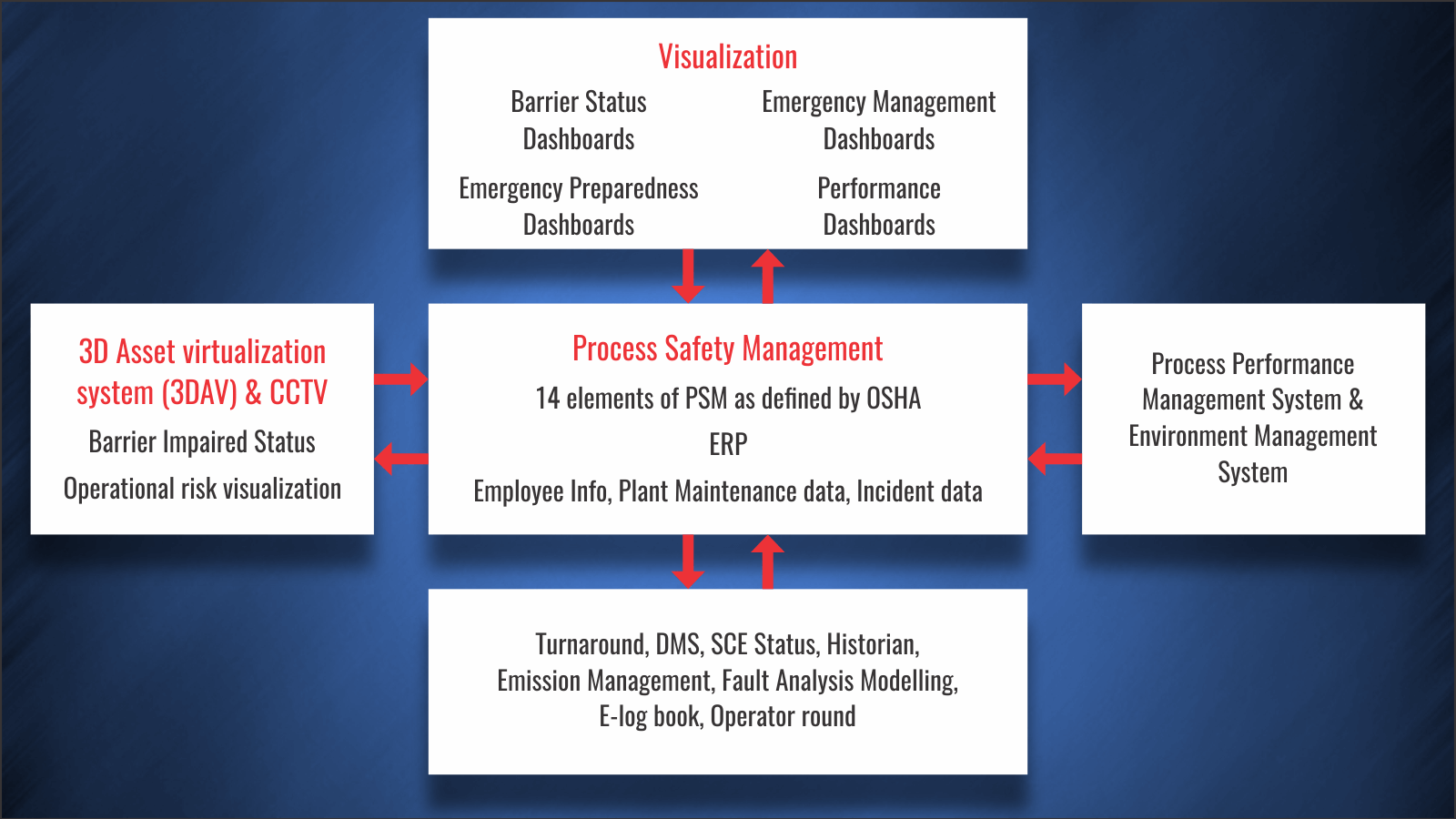Digital Emergency Response Center
Occupational hazards in the oil and gas industry can result in undesirable situations such as loss of lives, damage to the environment, financial losses, reputation damage, and more. Though companies in the sector have safety paradigms and controls in place, catastrophic tragedies still take place.
The onus for avoiding hazards in the oil & gas operations lies on the facility managers as they have to perform a thorough safety assessment of the overall facility. Risk management should be one of their prime responsibilities as top-notch safety practices can minimize the chances of hazards.
Current processes for mitigation of hazards comprise of a series of manual checks and inspections that lack the dynamic approach to establishing safeguards. This calls for implementation & execution of strategies to combat hazards that take into consideration the intricacies of the modern facilities.
Disadvantages of existing safety barrier management systems
Below are some of the disadvantages of existing systems that provide barrier management:
- Operational risk information available in silos
- Lack of transparency
- Lack of management of safety-critical equipments
- Inability to optimize work execution to mitigate potential risks
- Unavailability of a broad-level risk picture and mitigation plan
This approach is outdated as it won’t aid in swiftly mitigating risks. With digital technologies making in-roads in the oil & gas sector, it is vital to have a technological approach to risk management & mitigation in the sector.
A solution that delivers the practical benefits of digitalization, digital twins, IIoT (Industrial Internet of Things), and Industry 4.0 (I4.0) is the need of the hour. It is time to avoid catastrophic disasters such as Piper Alpha Oil Ring Explosion, a tragedy that occurred many years and shook the entire industry.
Digital Emergency Response Centre - Tech-led solution to Risk Management & Mitigation
Digital Emergency Response Centre is a solution that not only provides information regarding the associated risks but also provides an emergency response plan in case of any emergency. With quick access to the response plan, the respective teams can swiftly assess the situation & respond appropriately.
The solution is centered around technology, with increased thrust on digitalization, I4.0, and IIoT. It is based on the concept of Digital Barrier Management (DBM), a relatively new and dynamic approach to barrier management for improving operational risk management.
It provides a more integrated view of the operational facility. The solution is effective to visualize and manage activity & risks as it uses a multi-pronged approach that extracts, translates, and aggregates data from sensors, systems, and human-derived activities.
Unlike traditional safety barrier management systems where operational risk information is available in silos, Digital Emergency Response Centre connects people and helps close the loop between operations, maintenance, engineering, HSE (Health, Safety and Environment), and other functions. This coordinated approach helps in delivering meaningful, actionable insights across the organization.
Core features of Digital Emergency Response Centre

Some of the primary features of Digital Emergency Response Centre as per above diagram are as below:
- Decision support & visualization system provides in-depth status information of barrier impairment and emergency response action through emergency response and performance dashboards.
- Details about barrier impaired status and operational risk level visualization in a 3D Asset visualization system. The calculation is based on the incident data received from PSM (Process Safety Management System).
- Different modules (or components) such as PSM, CCTV, 3D Asset visualization system, weather systems, and more provide inputs to the decision support and visualization system. Information from many systems helps to gain better insights into the factory operations.
- PSM not only captures data from many different sources but also provides valuable insights regarding different KPIs that are related to 14 elements of process safety management plan as defined by OSHA (Occupational Safety and Health Administration).
Digital Emergency Response Centre provides in-depth information about the performance of the process safety systems, along with mapping all the deviations and hazardous activity against a dynamic process safety barrier model.
This enables the factory managers to have a better understanding of the health status of current barriers and cumulative risk impact in each area of the asset. It provides a holistic and common means of balancing risk against production at all levels of the operation.
Benefits of Digital Emergency Response Centre
Here are some of the main benefits of Digital Emergency Response Centre:
- Increased visibility of the activities in different parts of the facility (or organization) helps in quick response to an emergency, thereby improving the organization’s safety performance.
- A holistic view of the operational risks aids in identifying areas where priority risk-assessment measures need to be executed.
- Devising effective operational decisions based on the inputs from different systems.










